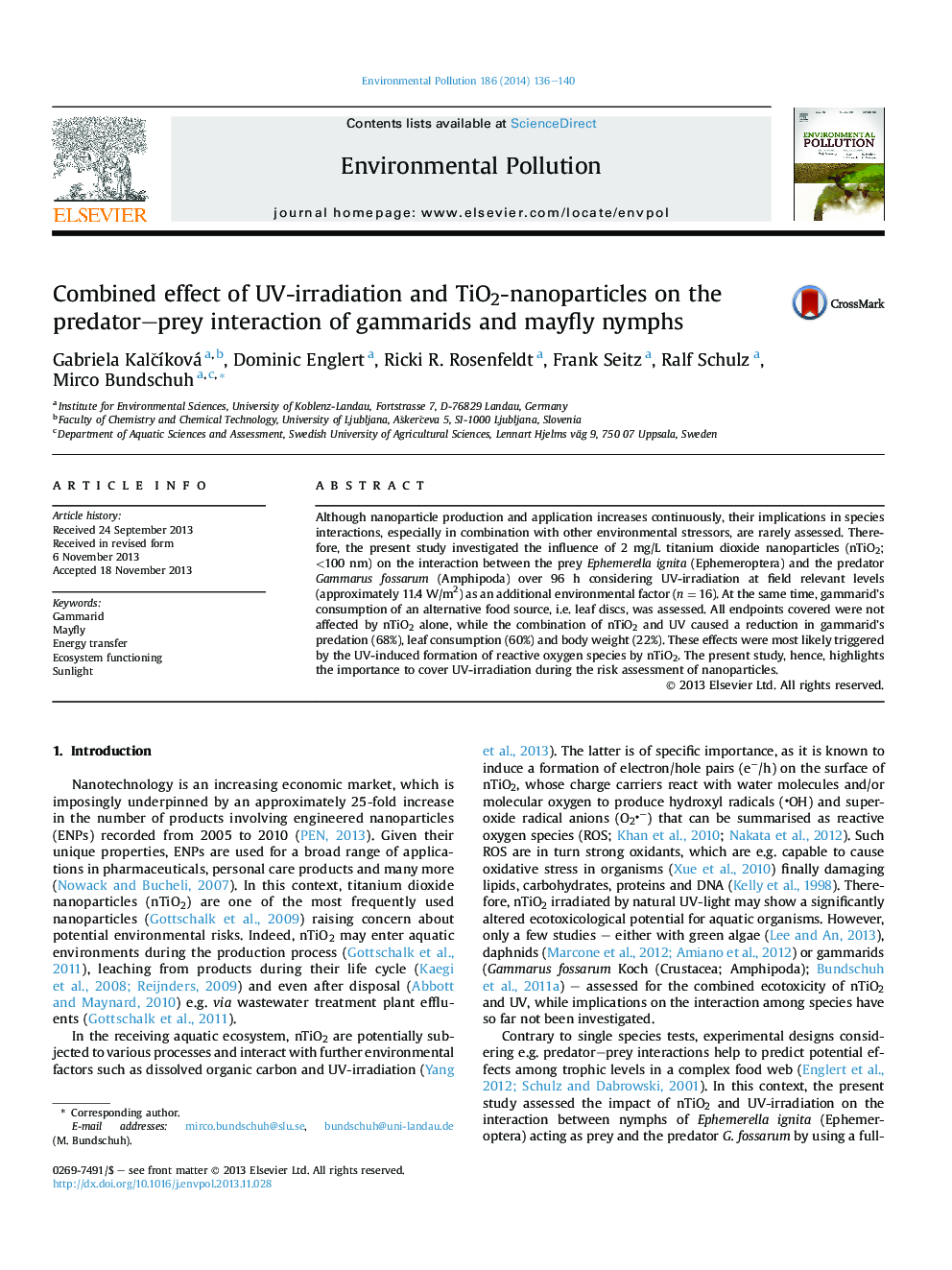| Article ID | Journal | Published Year | Pages | File Type |
|---|---|---|---|---|
| 6318375 | Environmental Pollution | 2014 | 5 Pages |
Abstract
Although nanoparticle production and application increases continuously, their implications in species interactions, especially in combination with other environmental stressors, are rarely assessed. Therefore, the present study investigated the influence of 2 mg/L titanium dioxide nanoparticles (nTiO2; <100 nm) on the interaction between the prey Ephemerella ignita (Ephemeroptera) and the predator Gammarus fossarum (Amphipoda) over 96 h considering UV-irradiation at field relevant levels (approximately 11.4 W/m2) as an additional environmental factor (n = 16). At the same time, gammarid's consumption of an alternative food source, i.e. leaf discs, was assessed. All endpoints covered were not affected by nTiO2 alone, while the combination of nTiO2 and UV caused a reduction in gammarid's predation (68%), leaf consumption (60%) and body weight (22%). These effects were most likely triggered by the UV-induced formation of reactive oxygen species by nTiO2. The present study, hence, highlights the importance to cover UV-irradiation during the risk assessment of nanoparticles.
Related Topics
Life Sciences
Environmental Science
Environmental Chemistry
Authors
Gabriela KalÄÃková, Dominic Englert, Ricki R. Rosenfeldt, Frank Seitz, Ralf Schulz, Mirco Bundschuh,
